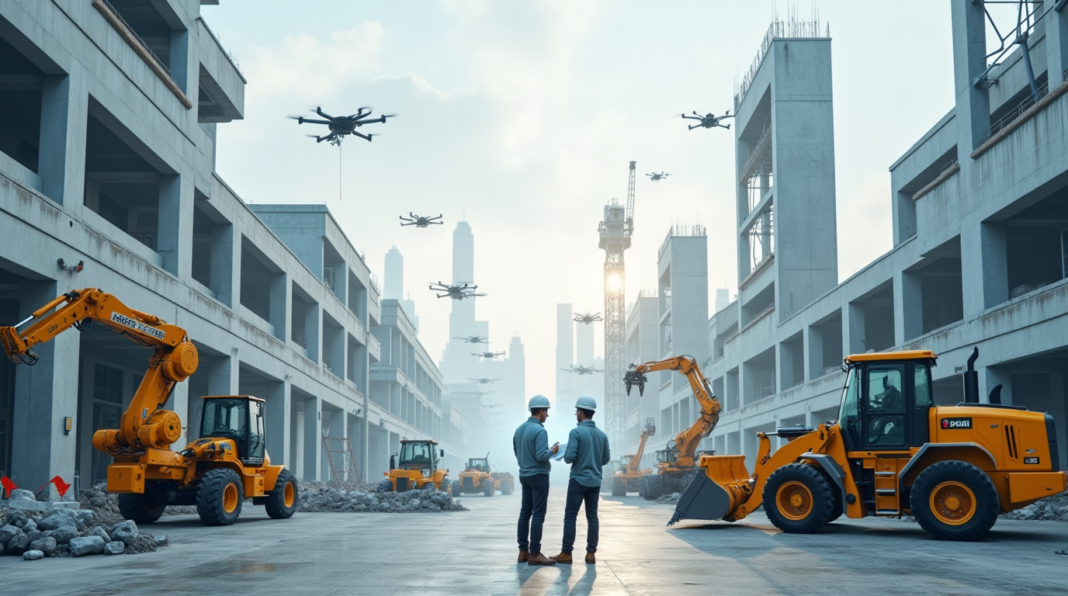A Quiet Revolution on the Job Site
Construction automation and robotics are no longer futuristic concepts—they’re quietly reshaping job sites in ways that are transforming how we build. It’s a strange moment in construction. For years, the industry seemed almost untouched by the speed of technological change happening elsewhere—especially compared to finance, manufacturing, or even healthcare. But that’s shifting fast. Walk onto some of the more forward-thinking sites today and you might spot a drone overhead, a robot laying bricks nearby, or a self-driving excavator working alongside a traditional crew.
Automation and robotics are no longer futuristic add-ons; they’re becoming part of how projects are built. I’ve seen firsthand how some teams are using drones not just for flashy aerial views, but for detailed site mapping, progress tracking, and even safety checks. It’s efficient, affordable, and most importantly, reliable.
From 3D Printing to AI Planning
Then there’s 3D printing. At first, it sounded like hype—but now entire homes and structural elements are being printed, layer by layer. It’s not just fast; it dramatically reduces waste and materials. Companies like COBOD and Winsun have printed low-cost homes that are already in use. And if you’re in areas dealing with housing shortages or rising labor costs, this isn’t a gimmick—it’s a real solution.
Robotic bricklayers and autonomous construction vehicles are also starting to become more common. I remember hearing someone say, “A robot doesn’t need lunch breaks or rest days”—and while it sounded cold, there’s truth in it. These machines don’t just work longer; they often deliver more precision, and less risk. Workers are still needed, but their roles are shifting—less manual labor, more coordination and oversight.
One of the biggest changes is happening behind the scenes. AI platforms are tracking progress, flagging delays before they happen, and helping teams manage logistics better than spreadsheets ever could. Tools like Buildots are already showing how AI can transform planning meetings and project updates. Instead of guessing where delays might occur, these platforms show you—in real time.
Global Shifts and Uneven Adoption

That said, progress isn’t equal everywhere. In places like Japan or South Korea, where robotics research is far ahead, automation is moving quickly. The same goes for parts of Europe where sustainability and precision are top priorities. In North America, the shift is more about combining AI with traditional project workflows. And in regions like Africa or Latin America, drones and modular builds are helping close infrastructure gaps at a lower cost.
It’s not all smooth, though. Many firms still hesitate to adopt automation. Some of it is cost—upfront investment is high. Some of it is culture—people are used to doing things a certain way, and there’s a real concern about job displacement. I’ve heard construction veterans express unease about working alongside machines or relying on data systems they don’t fully understand.

What the Future Might Look Like
But those concerns don’t erase the reality that automation is making job sites safer, more efficient, and more consistent. And it’s not about replacing people; it’s about allowing humans to do more meaningful, less hazardous work. Let the machines handle repetitive or dangerous tasks—humans can focus on creative problem-solving, technical oversight, and collaboration.
Where this all goes next is still being written. But I’d bet that in just a few years, many of these tools—robots, AI platforms, digital planning systems—will be standard on medium to large-scale projects. What feels novel now will soon feel normal. The key will be training, flexibility, and an open mindset.
We’re not just building structures anymore—we’re building smarter systems. And if we get it right, this new way of constructing things could be safer, more sustainable, and far more efficient than anything we’ve seen before.
References
- McKinsey & Company. (2020). The next normal in construction.
- Buildots.
- COBOD International.
- Winsun.
- Shimizu Corporation.
- 14Trees.
- International Federation of Robotics.
- World Economic Forum. (2021). Shaping the Future of Construction.

